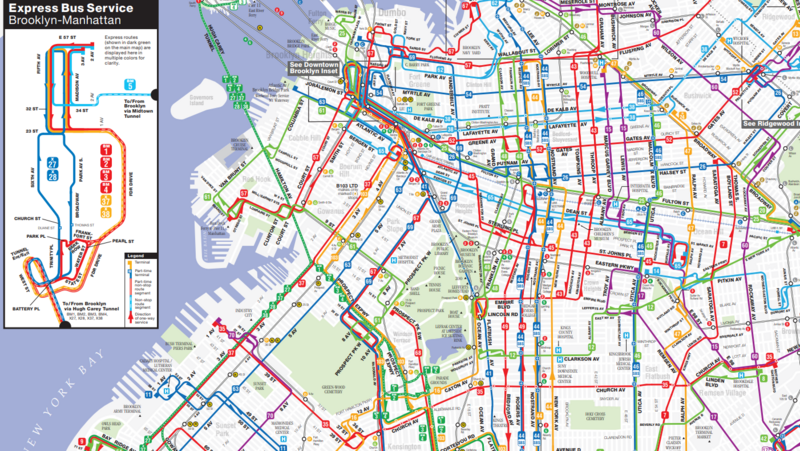IRMA MATRIX in New York
Automatic passenger counting on New York’s public transport
IRMA MATRIX sensors allow the MTA to react to change
about 2.6 billion passenger trips each year.


MTA’s need for real-time occupancy information
North America's largest transportation network, the New York region MTA
covers 5,000 square miles
fanning out from New York City through Long Island, southeastern New York State, and Connecticut. With 325 bus routes, a substantial part of this area is served by bus. The Authority’s bus department runs 5,800 vehicles, making it the nation’s largest bus fleet. In 2013, when MTA management proposed integrating a real-time occupancy information system into the fleet, the Bus Technology Group turned to iris for an automatic passenger counting (APC) sensors solution.

The MTA’s APC team provides up-to-the-minute occupancy information for passengers, while also helping the controllers know how efficiently operations are running. These data also benefit the MTA’s fleet deployment because the number of buses changes on a daily basis as new ones are delivered, while others are phased out as they reach the end of their useful lives.
When the APC project began, the initial goal was to provide real-time passenger boarding information. At the time, the MTA was using fare collection data taken from card swipes of the MTA’s proprietary MetroCard fare payment system. However, if a passenger boarded a bus at 12:06, it would count the passenger as boarding at 12 o’clock, so it was only accurate within six-minute blocks. While this might have generated enough information to know how many people boarded a bus, it did not necessarily provide any data about where they got off the bus or what the occupancy of the bus was at any given point.
So the search began for a more robust solution. Normally, agencies purchase a turnkey package from ITS vendors, with the vendor having full control of the system. MTA, however, decided to travel along a different route. They defined the scope of the APC system they wanted to implement and then purchased only the hardware.
All the integration, software, and application were developed in-house, thus MTA became its own ITS integrator.
This meant that the MTA’s APC Team had to cover every aspect of the implementation, from familiarization with the new technology, to becoming an integrator, collaborating with suppliers, and working with the bus manufacturers.
Why IRMA?
The initial exploratory phase of the project allowed MTA to determine what people-counting technology was available on the market at that time. After experimenting with a variety of APC sensor technologies, the MTA selected the iris IRMA MATRIX, fifth generation APC sensor, due to its accuracy and its ease of use and integration.
Fortunately, the MTA's Bus Technology Group had found a strong partner throughout the entire project in iris. As a trusted supplier, iris provided guidance based on their experience from working with other transport agencies, as well as other worldwide integrators. The iris team assisted the MTA with all the APC-related tasks technical issues and the programming of the hardware and software. iris established a long-term relationship with the MTA’s Bus Technology Group by remaining flexible in helping MTA achieve its objectives.
As a result of the MTA and iris partnership, the APC solution has been installed and implemented
on 2,500 buses
(approximately 40% of the MTA fleet) since the completion of design in 2016 and the first installations in 2017. The solution consists of an onboard unit and modem, relaying the raw data from the iris IRMA MATRIX sensors to a central computer acting as the brains of the activity. The system starts counting passengers as soon as the bus doors open, and stops counting when they close. The onboard unit then correlates these numbers with the GPS coordinates of the bus, its route number, and the operator’s run number, which dictates the scheduling. In less than a second, the central computer receives the information, providing real-time data for the MTA’s internal teams.




Enhancing convenience by communicating load factors
The APC project was originally envisioned as a generic passenger information system, displaying red, yellow, or green, depending on high, medium, or low load levels in a mobile customer app. The team had successfully implemented this feature around a year before the coronavirus pandemic struck New York. The state requested that the MTA refrain from showing the data in this color-coded manner, out of concern that passengers would misinterpret a green light as representing no risk of COVID infection. As a consequence, the MTA’s Bus Technology Group began displaying the passenger load in absolute numbers – allowing people to draw their own conclusions.



The iris system can also perform the counting of objects that are brought aboard the buses – and not just passengers. These objects include wheelchairs (and other mobility devices) and strollers. This is important because a stroller, for instance, takes up more space than passengers, so the information regarding the load numbers could be misleading if only ridership data is returned. Similarly, it is extremely useful for wheelchair users and their caregivers to know in advance whether the specially allocated spaces are free on the next vehicle.
A future proof solution
The next generation of IRMA sensors, the IRMA 6, will be introduced in the North American market shortly, and MTA is anticipating undergoing a demonstration of these sensors in 2021. The new sensors also make use of Time-of-Flight technology, which has been substantially developed by iris over the past 15 years. The sensors measure distances using their own light source outside the visible spectrum and calculate the time the beam takes from the source to the object and back – up to 76,800 pixels. These measurements result in an extraordinarily precise image of who or what is boarding the bus. Incidentally, a mass of people surging onto the vehicle at rush hour does not present a problem for today’s APC sensors, as they distinguish people by measuring the height differences and other key indicators.


Whatever the future may bring, there is no doubt that the face of public transport has changed forever as a result of the coronavirus pandemic. By the end of 2020, passenger numbers on the MTA system were on average approximately 30% of normal demand (buses 45% of normal in January 2021) and no one can be certain whether they will return to their former levels because so many people may continue to work remotely, even for a few days a week after the pandemic.
In any case, the Authority is undertaking a
complete bus network redesign.
To achieve this, the internal data teams utilize all the data to calculate where the bus services are required – in which boroughs and along which routes. The passenger counts collected by the iris sensors are crucial to this redesign. Current passenger loads and the location of subway stations, among other factors, are used to make the service more efficient and to determine which neighborhoods are served by which routes. The latest redesign also foresees the addition of dedicated bus lanes throughout the city to further streamline services.

Next steps for the MTA and iris
The partnership between the MTA and iris has already had some excellent results, but the MTA is not standing still as it looks toward even further implementations and system enhancements. The MTA’s next steps include:
- Implementing IRMA 6
- Considering testing wheelchair and stroller counting
The MTA’s ultimate goal is to have 100% of the fleet equipped with APCs.
